Fort Brooke, 1823-1883
Introduction
Text-to-speech Audio
Built in 1823-1824, Fort Brooke was established to secure American control of the region, which had previously been inhabited by Seminole Indians. The site is now occupied by the city's convention center and arena district. A historical marker commemorating the fort stands adjacent to the center's parking garage.
Images
Fort Brooke was established in 1823 and saw minor action during the Civil War. This marker denotes the location of the Fort Brooke Cemetery.
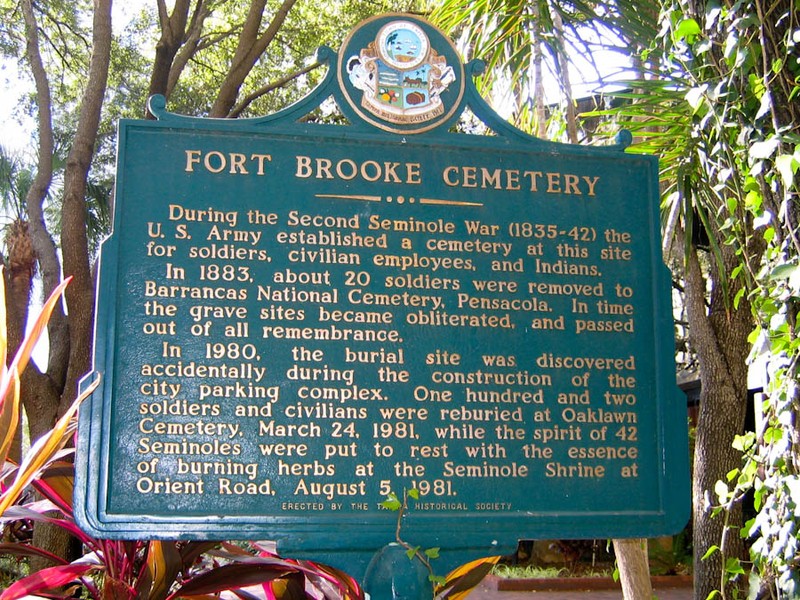
The fort held numerous troops during the Second and Third Seminole War. This image of the fort from about 1840 demonstrates how it grew during that period.
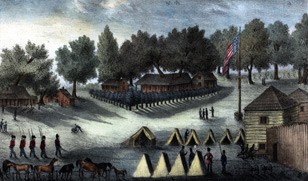
Portrait of Lieutenant James Gadsden, one of the founders of Fort Brooke
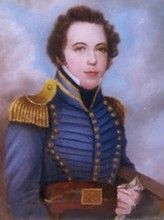
Sketch of the USS Adela, one of two Union ships that bombarded Fort Brooke
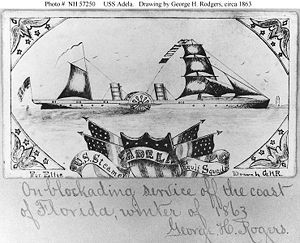
USS Tahoma, the other Union ship to bombard Fort Brooke
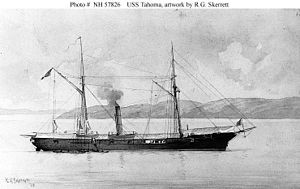
Depiction of one of the Seminole attacks on the fort
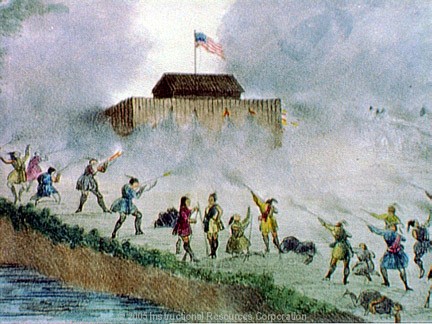
1838 map of the fort
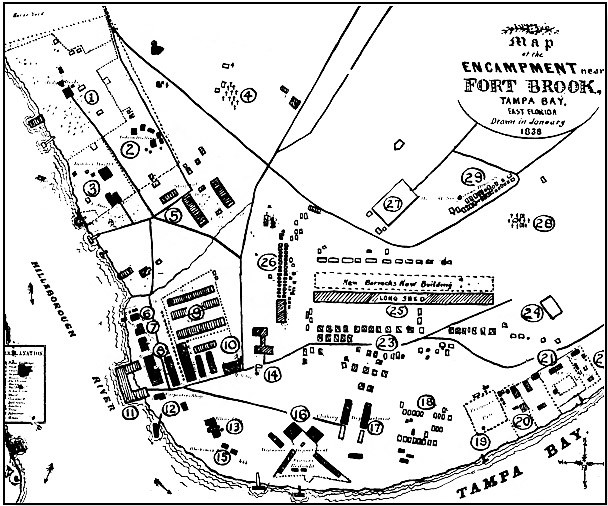
1870s-early 1880s photo of troops stationed at Fort Brooke
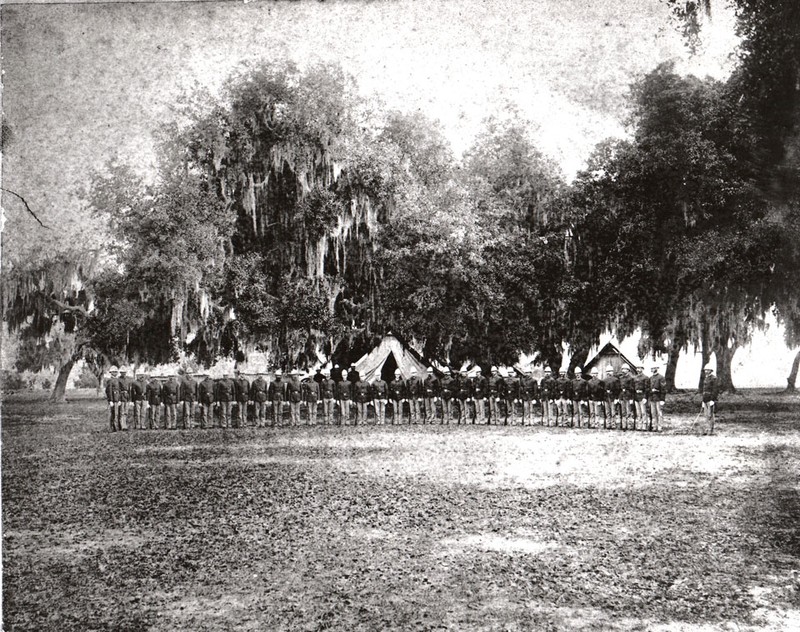
Pencil sketch of Captain's Quarters in 1845

Backstory and Context
Text-to-speech Audio
The fort's origins dates to the signing of the Treaty of Moultrie Creek between the federal government and the Seminole Indians (the United States had acquired Florida from Spain in 1821 as part of the Adams-Onís Treaty). The Seminoles agreed to relocate to a four-million acre reservation in central Florida and come under the protection of the government, which promised to provide the Seminoles with livestock, farming tools, enough food for a year, crop seeds, and an annual payment of $5,000 for 20 years. The Seminoles also agreed to the government to build roads in the reservation and capture escaped slaves.
Fort Brooke was established at the mouth of the Hillsborough River. At the time, the bay region was often visited by pirates, runaway slaves, and smugglers. There were also Spanish settlers who lived in camps called "fishing ranchos." Secretary of War John C. Calhoun ordered the construction of the fort under the direction of Colonel James Gadsen. Colonel Gadsen saw the fort as a necessary show of power to the Native Americans as well as a place to stage troops and demonstrate the commitment of the United States to maintaining control of the area after the purchase of Florida from Spain. In late 1823, the army deployed troops to the area and construction of the fort began.
Fort Brooke was one of the frontline defenses of Tampa and the western Florida coast during the three Seminole Wars, of which the fort was attacked by the Seminoles on at least one occasion. Fort Brooke is most famous for the Battle of Fort Brooke, which took place in October of 1863. Two Union ships attacked the fort not to capture it but instead to tie up Confederate defenders while Union landed troops at at Ballast Point and captured other ships located upriver from the fort. A year later Union forces captured both the fort and Tampa. As Tampa languished during the post-war years, so too did the fort. The fort was decommissioned in 1883.
Sources
The American Battlefield Protection Program. "Fort Brooke." https://www.nps.gov/abpp/battles/fl004.htm. Cantor Brown, Jr. Tampa Before the Civil War (University of Tampa Press: 1999) Kennedy, Frances H., ed., The Civil War Battlefield Guide, 2nd ed., Houghton Mifflin Co., 1998.
Covington, James W. "Some Observations Concerning the History of Fort Brook and Tampa." Sunland Tribune, Vol. 22 , Article 6. Available at: https://digitalcommons.usf.edu/sunlandtribune/vol22/iss1/6.
Pizzo, Tony. "Fort Brooke: The First Ten Years." Sunland Tribune, Vol. 14, Article 4. https://digitalcommons.usf.edu/sunlandtribune/vol14/iss1/4.
Thayer, Bill. "The Establishment of Fort Brooke." Florida Historical Quarterly. http://penelope.uchicago.edu/Thayer/E/Gazetteer/Places/America/United_States/Florida/_Texts/FlaHQ/31/The_Establishment_of_Fort_Brooke*.html.
